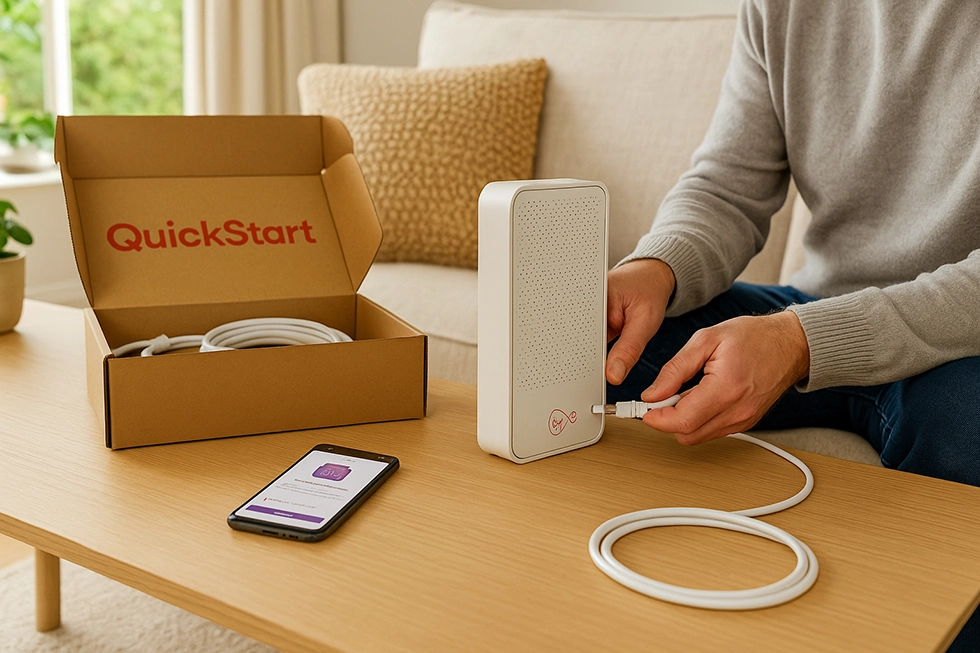The UK government is preparing to extend the Gigabit Broadband Voucher Scheme (GBVS) to more towns, villages and business areas, giving households and companies in poorly served locations the chance to secure funding for faster broadband connections. The scheme, run by Building Digital UK (BDUK), plays a key role in filling the gaps left behind by commercial rollouts and larger Project Gigabit contracts.

How the voucher scheme works
The GBVS offers grants of up to £4,500 per premises to help cover the cost of installing gigabit-capable broadband. It is designed for areas where existing broadband speeds fall short of modern standards and where no commercial or publicly funded rollout is planned in the near future. Homes and businesses can pool vouchers to make small-scale fibre builds financially viable for suppliers.
The scheme sits within Project Gigabit, the government’s £5 billion programme aimed at bringing gigabit-capable broadband to hard-to-reach parts of the UK. Around £210 million has been set aside for vouchers, with local councils often adding their own top-up funds to increase the value available to residents.
Updated eligibility rules
BDUK updated the voucher scheme rules in mid-2025 to reflect changes in broadband coverage across the UK. Under the revised criteria, properties are eligible if they currently receive speeds below one gigabit per second. Any upgrade funded through the scheme must represent a clear improvement, typically by at least doubling the speeds available to the premises. This ensures that the funding goes to areas with the most to gain rather than providing only marginal improvements.
New-build housing developments are usually excluded, as developers are expected to provide full-fibre connections at the time of construction. To avoid double funding, eligibility is also cross-checked against rollout plans already committed by commercial providers or larger state-funded projects. This helps ensure the vouchers are used only where no other fibre investment is expec
Where the scheme is expanding
New voucher eligibility is now being extended to more parts of the country, including areas of Cambridgeshire, Dorset, Newcastle and North Tyneside, Norfolk, the wider North East of England, and Wales. Alongside these new regions, additional addresses within existing voucher zones are also being brought into scope.
These include properties in Shropshire, Birmingham and the Black Country, Greater London, as well as parts of Merseyside and Greater Manchester. By widening coverage within both new and existing regions, the scheme aims to reach clusters of homes and businesses that would otherwise remain stuck with sub-gigabit speeds.
Until now, access to the voucher scheme was restricted to a more limited set of locations, including Derbyshire, parts of London, Scotland and the Isle of Wight. The decision to expand follows ongoing reviews of broadband rollout data, which show where commercial or publicly funded full-fibre projects are unlikely to arrive soon.
This gradual approach allows BDUK to update the eligible areas in line with shifting rollout plans, ensuring that communities without a near-term upgrade path are not left behind.
Rollout schedule and emphasis
Suppliers have been advised that new voucher projects which can be delivered and fully claimed before April 2027 will be prioritised. This is to make sure funding is used quickly and effectively in areas that would otherwise continue to struggle with poor connections. Existing projects are not affected, provided they meet agreed milestones.
Benefits for homes and businesses
For households and small firms still stuck on slower connections, the vouchers could cover much of the cost of fibre installation. In some counties, local top-up schemes mean that the total support goes well beyond £4,500, making it easier for suppliers to build to small groups of premises that might otherwise be left behind.
People in newly opened areas can expect to see network providers promoting voucher-backed projects locally. Signing up interest is usually a first step, since suppliers need a minimum number of participants to make a scheme viable.
Future outlook
The expansion of the voucher scheme feeds into the government’s wider ambition of reaching at least 85 per cent gigabit coverage by 2025 and nationwide coverage by 2030. Recent data shows that the 85 per cent milestone has been reached, but rural and hard-to-connect areas remain dependent on targeted support.
By widening the voucher scheme now, BDUK is giving suppliers more flexibility to tackle small clusters of properties, including pockets in urban areas where commercial fibre builders have chosen not to invest. It is another tool alongside larger regional contracts and private investment aimed at closing the digital divide.










